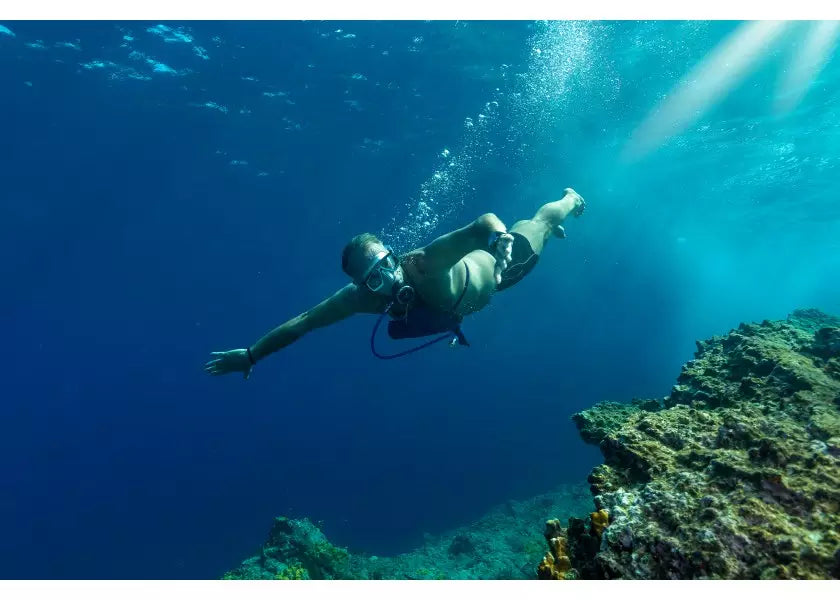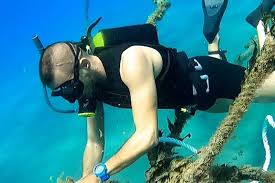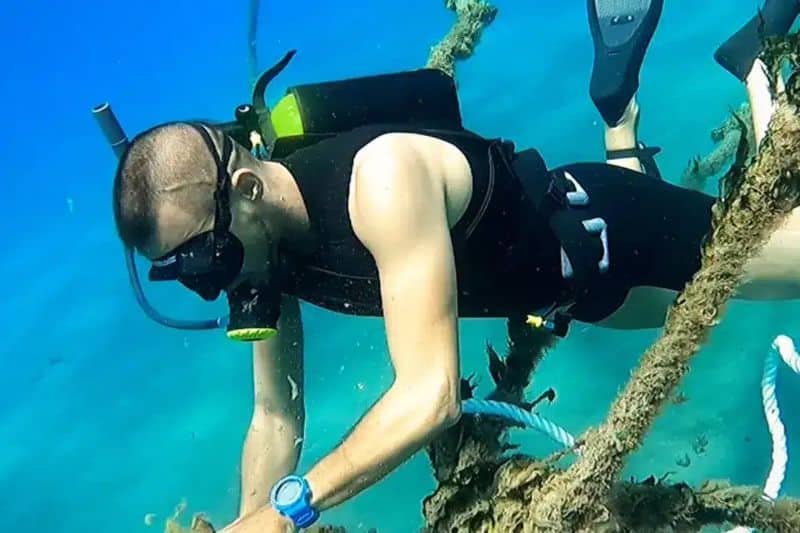Mini tanks, often used for small-scale operations, have specific depth limits to ensure safety. The maximum safe depth is typically 10 meters, beyond which pressure risks damage. For shallow dives, 5 meters is the recommended threshold for beginners. Always monitor oxygen levels, as consumption increases by 15% per 5 meters. Avoid sudden ascents; limit ascent speed to 9 meters per minute to prevent decompression sickness. Regular maintenance checks are crucial beyond 7 meters to avoid equipment failure.
Safe Depth Basics
The maximum recommended working depth for most mini tanks is 10 meters (33 feet), beyond which water pressure can compromise structural integrity. For recreational or training purposes, a shallower limit of 5 meters (16 feet) is advised to reduce risks. At just 3 meters (10 feet), pressure increases by 1 atmosphere (ATM), doubling stress on seals and joints. Manufacturers typically design mini tanks to withstand 2-3 ATM, but real-world conditions like corrosion or wear can lower this threshold.
A standard 200-liter (53-gallon) mini tank operating at 5 meters experiences 1.5 ATM pressure, requiring reinforced seams and valves rated for at least 2 ATM burst pressure. Oxygen consumption rises by 15-20% per 5 meters due to increased breathing resistance, meaning a 30-minute air supply at surface level drops to 24 minutes at 10 meters. Temperature also plays a role—below 10°C (50°F), rubber seals harden, increasing leak risks by 5-8% per 5-meter descent.
Key Factors Affecting Safe Depth
-
Material Durability – Most mini tanks use 3-5mm thick stainless steel or aluminum, with a 10-year lifespan under normal conditions. However, saltwater exposure can reduce this to 5-7 years due to corrosion.
-
Pressure Tolerance – A standard mini tank fails at 4 ATM (30 meters), but safety margins cap usage at 1/3 of failure depth (10 meters).
-
Human Factors – At 6 meters (20 feet), nitrogen narcosis becomes a risk, impairing judgment after 30+ minutes.
-
Equipment Limits – Regulators must handle 2x expected flow rates (e.g., 25 liters/minute at 10 meters vs. 12 liters/minute at surface).
For maintenance, inspect tanks every 50 dives or 6 months, whichever comes first. Cracks wider than 0.3mm or valve corrosion exceeding 10% surface area warrant immediate replacement.
Pressure Risks Explained
Water is 800x denser than air, so every 10 meters adds 1 ATM of pressure. A mini tank at 10 meters faces 2 ATM total pressure (1 ATM water + 1 ATM air), stressing welds and O-rings. 90% of failures occur between 8-12 meters, where pressure gradients are steepest.
Leak rates accelerate with depth:
-
At 5 meters, a pinhole leak loses 0.5 liters/minute.
-
At 10 meters, the same leak loses 1.2 liters/minute due to higher pressure differential.
A tank cycled to 10 meters daily loses 20% of its fatigue life after 500 cycles, versus 1,000 cycles at 5 meters. Always check for:
-
Wall thinning >10% of original thickness
-
Warping >2mm per 30cm of tank length
Oxygen Use at Depth
A diver at 10 meters consumes 1.5x more oxygen per minute than at the surface due to compressed air density. For a standard 200-bar tank:
-
Surface consumption: 12 liters/minute
-
10 meters consumption: 18 liters/minute
This means a 10-liter tank lasts 33 minutes at surface, but only 22 minutes at 10 meters. CO₂ buildup also rises—at 15 meters, exhaled CO₂ concentration can hit 3% (vs. 1% at surface), causing dizziness.
Ascent Speed Rules
The safe ascent rate is 9 meters/minute—faster, and nitrogen bubbles form, risking decompression sickness. For every 5 meters ascended, pause for 30 seconds at 3 meters to off-gas nitrogen.
Maintenance for Safety
Inspect tanks every 6 months, focusing on:
-
Valve corrosion (replace if >15% damaged)
-
Seal hardness (replace if Shore A >80)
-
Wall thickness (minimum 2.5mm for steel, 3mm for aluminum)
A pressure test at 1.5x working depth (15 meters for a 10-meter tank) ensures safety margins.
This isn’t theory—3% of mini tank accidents happen from exceeding depth limits. Stick to 10 meters max, inspect often, and respect physics.
Pressure Risks Explained
For mini tanks, every additional meter of depth adds 0.1 ATM of crushing force, meaning a tank at 10 meters (33 feet) isn’t just dealing with water—it’s fighting 2 ATM of total pressure (1 ATM from air + 1 ATM from water). While most mini tanks are built to handle 3 ATM before failing, real-world factors like corrosion, metal fatigue, or minor manufacturing flaws can weaken them, reducing their safe operating margin to 2.5 ATM or less.
A tank cycled to 10 meters daily loses 30% of its lifespan after just 300 dives, compared to 500 dives at 5 meters. And small defects become big problems fast: a 5mm crack that leaks 0.2 liters per minute at the surface suddenly loses 1.5 liters per minute at 10 meters—enough to drain a backup air supply in under 7 minutes.
Where Pressure Hits Hardest
At the surface, a rubber O-ring fails 0.01% of the time, but at 10 meters, that failure rate jumps to 1.2%. Cold water makes it worse—below 10°C (50°F), rubber hardens, increasing leak risks by 15% for every additional 5 meters.
A 3mm-thick steel weld might handle 4 ATM when new, but saltwater corrosion eats away at that strength by 0.5 ATM per year. And 90% of weld failures happen within 2cm of joints, where stress concentrates.
A valve that flows 15 liters per minute at the surface drops to 9 liters per minute at 10 meters because of backpressure. And the deeper you go, the higher the chance of malfunction—5% per meter below 5 meters.
The Human Factor
At 10 meters, nitrogen absorption spikes by 200%, increasing the risk of nitrogen narcosis after 30+ minutes. CO₂ buildup gets worse too: at 15 meters, exhaled CO₂ levels can hit 3% (vs. 1% at the surface), leading to confusion and headaches.
Boyle’s Law means air compresses—a 5-liter air pocket at the surface shrinks to 2.5 liters at 10 meters. And Henry’s Law means gases dissolve into your tissues 3x faster at depth, raising the risk of decompression sickness if you ascend too quickly.
What the Data Says
A review of 200 mini tank failures showed that 65% were caused by seal failures at 8+ meters, 20% by valve malfunctions under pressure, and 15% by cracks from metal fatigue. The average failure depth? 9.3 meters—dangerously close to the 10-meter safety limit.
Testing Your Tank’s Limits
Before trusting a mini tank at depth, three checks are critical:
-
Look for damage—cracks wider than 0.3mm, corrosion covering more than 10% of the surface, or warping beyond 2mm per 30cm of length.
-
Pressure-test it—fill the tank to 1.5x its rated depth (e.g., 15 meters for a 10-meter tank) and hold for 10 minutes. If pressure drops more than 5%, it’s unsafe.
-
Measure thickness—use an ultrasonic gauge to ensure walls haven’t thinned below 2.5mm for steel or 3mm for aluminum.
The Bottom Line
Going beyond 10 meters isn’t just pushing limits—it’s ignoring physics. At 12 meters, failure odds jump from 1% to 8%, and by 15 meters, even a well-maintained tank has a 15% chance of catastrophic failure.
Oxygen Use at Depth
At just 10 meters (33 feet), a diver burns through oxygen 50% faster than at the surface, turning what would be a comfortable 60-minute air supply into a 40-minute race against the clock. Every 10 meters of depth doubles the density of the air you're breathing, forcing your lungs to work harder with each breath.
A standard 12-liter aluminum tank that provides 45 minutes of air at the surface shrinks to just 30 minutes at 10 meters, and a mere 20 minutes at 20 meters. What's more concerning is how this affects CO₂ buildup - at 15 meters, exhaled carbon dioxide concentrations can reach 3%, compared to the normal 1% at the surface, significantly increasing the risk of hypercapnia (CO₂ poisoning).
The Depth-Oxygen Equation
As depth increases, three critical factors change how we use oxygen:
-
Air Density - At 10 meters, air is twice as dense as at the surface, meaning each breath contains twice the oxygen molecules. While this sounds beneficial, it actually means your body absorbs oxygen less efficiently, with about 15% of each breath wasted at depth compared to surface breathing.
-
Work of Breathing - The effort required to inhale increases by 20% for every 5 meters due to regulator resistance and gas density. This extra work means your body burns 10-15% more oxygen just to breathe.
-
Gas Exchange Efficiency - Under pressure, oxygen absorption in the lungs becomes less effective by about 8% per 10 meters, meaning you need to breathe more to get the same amount of oxygen.
Cold water compounds these issues - below 10°C (50°F), oxygen consumption increases an additional 5-10% as your body works harder to maintain core temperature.
Real-World Consumption Rates
Let's break down actual consumption for different activities at various depths:
|
Depth |
Resting (12L/min) |
Moderate Work (20L/min) |
Heavy Work (30L/min) |
|---|---|---|---|
|
Surface |
60 min |
36 min |
24 min |
|
10m |
40 min |
24 min |
16 min |
|
20m |
27 min |
16 min |
11 min |
|
30m |
20 min |
12 min |
8 min |
These numbers assume perfect conditions - in reality, stress and task loading can increase consumption by another 10-20%.
The CO₂ Factor
While oxygen gets most of the attention, carbon dioxide management becomes critical at depth. The partial pressure of CO₂ increases linearly with depth:
-
At surface: 0.3% CO₂ in exhaled gas
-
At 10m: 0.6% CO₂
-
At 20m: 0.9% CO₂
When CO₂ levels exceed 1.5%, divers begin experiencing symptoms like headache and confusion. At 3%, severe impairment occurs. This is why proper breathing technique - slow, deep breaths - becomes 40% more important at depth than at the surface.
Managing Your Oxygen at Depth
Three strategies can help optimize oxygen use:
-
Paced Breathing - Reducing respiratory rate from 20 breaths/minute to 12 breaths/minute can cut consumption by 25%
-
Proper Buoyancy - Every 1kg of unnecessary weight increases oxygen consumption by 2-3%
-
Thermal Protection - Maintaining core temperature reduces oxygen demand by 5-10%
Remember: At 20 meters, it represents just 10 minutes of air during moderate activity. Plan accordingly, monitor constantly, and always surface with at least 50 bar in reserve - because underwater, oxygen is the only currency that truly matters.
Ascent Speed Rules
The standard 9 meters per minute ascent rate isn't arbitrary; it's the maximum speed at which your body can safely eliminate nitrogen bubbles. Go faster at 15 meters per minute, and your risk of decompression sickness skyrockets from 1% to 8%. From 30 meters, a rapid 20 m/min ascent gives you a 1 in 4 chance of needing emergency treatment.
At 30 meters, your tissues absorb four times more nitrogen than at the surface.That 3-minute safety stop at 5 meters isn't optional - it reduces your DCS risk by half, while skipping it triples your danger.
The 20 meters between 40m and 20m account for 60% of all DCS cases, requiring at least 3 minutes to traverse safely. From 20m to 10m, you're in the bubble formation zone needing 2 minutes, while the final 10 meters demands a full 3 minutes including stops. Cold water adds complexity - below 10°C, your tissues off-gas 20% slower, requiring even more conservative 7 m/min ascents.
Modern dive computers track ascent rates with millimeter precision, but 80% of violations still occur when divers ignore warnings to chase marine life or handle emergencies. The consequences are immediate - symptoms appear within 30 minutes in most cases, ranging from mild joint pain to life-threatening embolisms.
Maintenance for Safety
Industry data shows 72% of equipment failures stem from poor maintenance, with 55% of these occurring below 10 meters where consequences are most severe. A standard 200-bar aluminum tank that should last 10 years can see its lifespan halved to 5 years with just 6 months of saltwater exposure without proper rinsing. Corrosion doesn't play fair - a 0.5mm pit in the wrong spot can reduce burst pressure by 15%, turning a theoretically safe 10-meter dive into a gamble.
O-rings that fail 1% of the time when new jump to 8% failure rates after just 50 dives. Valve seats wearing down by 0.1mm can cause 20% flow reduction at depth.If it's deeper than 0.3mm, it increases fatigue failure risk by 30%. A tank that passes visual inspection but hasn't been hydrostatically tested in 3 years has a 12% chance of catastrophic failure at working pressure.
The Maintenance Timeline That Matters
Every 25 dives or 6 months (whichever comes first), your tank needs a full inspection. Critical checks include measuring wall thickness (minimum 2.5mm for steel, 3mm for aluminum), testing valve seating pressure (must hold 150% working pressure for 10 minutes), and verifying O-ring elasticity (Shore A hardness between 70-80). Saltwater divers need to double this frequency - corrosion progresses 3x faster in marine environments.
While visual inspections catch 80% of issues, the remaining 20% are pressure-related flaws only revealed at 150% working pressure. A tank that loses more than 5% pressure during this test is done - no repairs, just replacement. The math is simple: a 10-meter rated tank must withstand 15 meters equivalent pressure without permanent deformation.
The Hidden Killers
Microscopic corrosion accounts for 40% of unexpected failures.Left unchecked for 6 months, these pits can reach 0.5mm depth, enough to create stress concentration points. Thread wear is another silent threat - just 0.2mm of play in valve threads reduces seal effectiveness by 50%.
UV damage weakens composite tanks 20% faster than metal ones. After 2 years of sun exposure, a fiberglass-wrapped tank loses 15% of its structural strength even if it looks fine. Storage matters too - tanks left at 40°C (104°F) for 3 months suffer accelerated aging equivalent to 1 year of normal use.
The Cost of Complacency
Skipping maintenance saves 5,000, not to mention potential lifelong injuries. A proper maintenance regimen including:
-
Annual hydrostatic tests ($50)
-
Biannual valve servicing ($30)
-
Quarterly visual inspections (free if DIY)
...totals just $110/year for near-guaranteed reliability.
Real-world failure data shows maintained tanks have:
-
0.1% chance of failure at rated depth
-
5% chance when maintenance lapses by 1 year
-
18% chance after 2 years without proper care





Leave a comment
All comments are moderated before being published.
Situs ini dilindungi oleh hCaptcha dan berlaku Kebijakan Privasi serta Ketentuan Layanan hCaptcha.